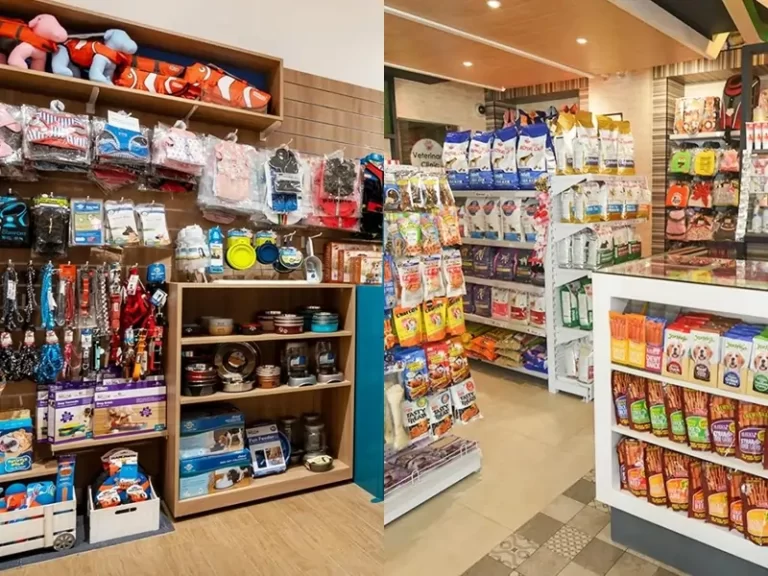In recent years, pet supply have witnessed a noticeable increase in prices, and several factors contribute to this trend.
1. Increased Raw Material Costs:
The escalating cost of raw materials plays a pivotal role in driving up the prices of pet supply. Essential components like meat, grain, plastic, and metal have seen a rise in costs due to factors like inflation, disruptions in the supply chain, and heightened demand.
2. Surge in Premium Pet Supply Products:
Another significant factor is the surging popularity of premium pet supply food and treats. Pet owners are increasingly willing to invest more in top-quality items for their furry companions. The production of premium pet supply often involves higher quality ingredients, leading to increased manufacturing expenses compared to mass-produced alternatives.
3. Impact of Tariffs on Imported Goods:
Tariffs imposed by the United States on goods imported from China have contributed to the upward trajectory of pet supply costs. Since many pet supply are manufactured in China, these tariffs have made these products pricier for US consumers.
4. Additional Contributors:
Other factors influencing the rise in pet supply costs encompass escalating wages for workers in the pet supply industry, augmented marketing and advertising expenses, and the continuous development of new and innovative pet supply products.
For those facing challenges in affording pet care, numerous resources are available for support. Local animal shelters or humane societies can provide information about financial assistance programs, and online resources such as the Pet Supply Assistance Foundation may offer additional help.
Pet supply can strain your budget, especially with larger or multiple pets. Fortunately, there are practical ways to cut costs without compromising quality.
1. Comparison Shopping:
Explore various stores, online and offline, to find the best prices on pet supply. Consider buying in bulk for additional savings.
2. Opt for Generic Brands:
Choose generic pet supply food and treats – they often match the quality of name brands but at a lower cost. Ensure you check the label for high-quality ingredients.
3. DIY Pet Food and Treats:
If time allows, consider making your pet’s food and treats at home. It’s a cost-effective way to provide a healthy diet, with numerous recipes available online.
4. Embrace Pet Insurance:
Pet insurance can be a lifesaver for unexpected veterinary bills. Even if used infrequently, it proves cost-effective in the long run.
5. Home Grooming:
Save on grooming costs by grooming your pet at home. If you’re unsure, seek assistance from friends, family, or online tutorials.
6. Preventive Care Products:
Invest in preventive care products like flea and tick medication to maintain your pet’s health and avoid pricey vet visits.
7. Tap into Low-Cost Veterinary Services:
Animal shelters, humane societies, and online resources like the Pet Assistance Foundation often provide low-cost or free veterinary services for financially constrained pet owners.
Additional Money-Saving Tips:
– Bulk Purchases:
Buy pet supply in bulk for added savings.
– Coupons and Discounts:
Keep an eye out for coupons and discounts.
– Veterinarian Samples:
Ask your vet for product samples.
– Loyalty Programs:
Take advantage of loyalty programs for recurring savings.
– Secondhand Shopping:
Explore thrift stores and consignment shops for budget-friendly options.
– DIY Toys and Accessories:
Get creative and make your pet’s toys and accessories at home.
By incorporating these strategies, you can trim your pet supply expenses without compromising the well-being of your furry companions.
If you find it challenging to cover the costs of caring for your pet, several resources are available to lend a helping hand:
1. Local Animal Shelters and Humane Societies:
Many of these organizations extend financial aid programs to assist low-income pet owners with essential needs, including veterinary care, food, and supplies. Some even provide pet supply food banks and affordable spay/neuter services.
2. Pet Assistance Foundation:
A national nonprofit, the Pet Assistance Foundation offers financial assistance grants to pet owners facing difficulties affording veterinary care.
3. RedRover Relief:
Another national nonprofit, RedRover Relief provides financial assistance grants to pet owners encountering financial hardships due to unexpected veterinary bills or medical emergencies.
4. CareCredit:
CareCredit, a healthcare financing company, offers a credit card tailored for veterinary care payments. They provide interest-free payment plans for qualifying purchases for up to 18 months.
5. Scratchpay:
Another healthcare financing option, Scratchpay, offers various payment plans for veterinary care without interest or upfront fees.
6. Pet Insurance:
Considering pet insurance can help mitigate the costs of unforeseen veterinary bills. Compare plans based on price and coverage to find the most suitable option.
Additionally, there may be local organizations offering assistance to pet owners in need. Reach out to your nearby animal shelter or humane society for further details.
Here are some tips for seeking and applying for financial assistance for pet care:
– Begin by exploring resources in your local community, such as animal shelters and humane societies.
– If local options are limited, national organizations like the Pet Assistance Foundation and RedRover Relief can provide assistance.
– When applying for aid, provide comprehensive information about your pet’s medical condition and your financial situation. Documentation of income and expenses may also be required.
– Don’t hesitate to ask for help. Many individuals are currently facing challenges affording pet care, and seeking assistance is a valid choice.
I trust this information proves valuable. Feel free to reach out if you have any further questions.

While pet care expenses can add up, they don’t have to strain your finances. Consider these tips for effective budgeting:
1. Calculate Monthly Expenses:
Estimate your pet’s monthly needs, covering food, treats, toys, grooming, and veterinary care. Once you have a clear picture of your monthly spending, create a budget accordingly.
2. Allocate a Portion of Your Income:
Set aside a fixed amount or a percentage of your income for pet care. Ensure it is sufficient to meet your pet’s basic requirements.
3. Build a Pet Supply Emergency Fund:
Establish a savings account specifically for unexpected pet-related expenses. Even a small monthly contribution can accumulate into a useful emergency fund over time.
4. Maximize Discounts and Promotions:
Take advantage of discounts offered by pet supply stores and veterinary clinics, especially those catering to seniors, military members, and other groups. Seek out coupons and promotions online, in newspapers, and magazines.
5. Explore Pet Insurance:
Investigate various pet insurance plans to offset unexpected veterinary costs. Compare plans to find the one that best suits your needs.
6. DIY Pet Supply Food and Treats:
Consider making your own pet supply food and treats at home. Not only can this save money, but it ensures your pet maintains a healthy diet. Numerous recipes are available online.
7. Home Grooming:
Save on grooming costs by grooming your pet at home. If you’re not confident in doing it yourself, seek assistance from friends, family, or online tutorials.
8. Utilize Preventive Care Products:
Invest in preventive care products like flea and tick medication to maintain your pet’s health and avoid costly veterinary bills.
9. Tap into Low-Cost Veterinary Services:
Take advantage of free or low-cost veterinary services offered by animal shelters, humane societies, and online resources like the Pet Assistance Foundation.
By incorporating these strategies, you can effectively budget for pet care without compromising on quality.
If caring for your pet feels financially challenging, consider these steps:
1. Consult Your Veterinarian:
Reach out to your vet for potential cost-saving solutions. They may offer discounts on medications or services and suggest affordable alternatives.
2. Connect with Local Shelters:
Contact your nearby animal shelter or humane society; many provide financial aid for low-income pet owners, covering essentials like veterinary care, food, and supplies. Some even offer pet supply food banks and low-cost spay/neuter services.
3. Seek National Financial Assistance:
Explore options from national organizations like the Pet Assistance Foundation and RedRover Relief, both offering financial aid to pet owners in need.
4. Explore Pet Insurance:
Investigate various pet insurance plans to mitigate unexpected veterinary costs. Compare plans to find the best fit for your needs.
5. Reach Out to Friends and Family:
If possible, ask friends or family for support with pet care costs, whether through financial assistance or donations of food and supplies.
6. DIY Pet Supply Food and Treats:
Save on expenses by preparing your pet’s food and treats at home. Numerous online recipes ensure a healthy diet.
7. Home Grooming:
Trim grooming costs by grooming your pet at home. Seek help from friends, family, or online tutorials if needed.
8. Utilize Preventive Care Products:
Invest in preventive care products like flea and tick medication to maintain your pet’s health and prevent expensive vet bills.
9. Tap into Low-Cost Veterinary Services:
Explore free or low-cost veterinary services offered by animal shelters, humane societies, and online resources like the Pet Assistance Foundation.
Remember, if you’re struggling, assistance is available. Don’t hesitate to ask for help, and prioritize your pet’s well-being.
Additional Tips for Managing Pet Care Costs:
– Prioritize Spending:
Decide what matters most to you and your pet, allocating funds accordingly. For instance, you might cut back on grooming to afford better food or veterinary care.
– Embrace Creativity:
Discover ways to save money without compromising quality, such as buying pet supplies in bulk or creating homemade pet food and treats.
– Practice Patience:
Adjusting to a new budget takes time. Be patient with yourself and your pet, ensuring they continue to receive the love and care they deserve.











